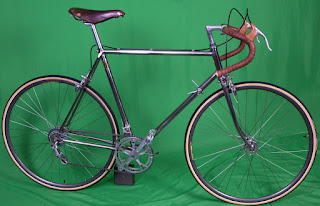The Angkor Wat, which I visited five years ago, is definitely a marvel. Of course, I was awed by its architecture, history, art and overall aesthetics, as well as its importance to the identity of a people--and the human race. But even if I didn't care about such things, and I concerned myself only with materialistic, quantitative and practical matters, I probably would have been just as awed as I was: The temples were built without the use of cement, nails, screws or any other materials to fasten or bind the blocks to each other. Rather, those stones were so precisely cut, and fit into each other so perfectly, that the temples have withstood a millenium (or more) of heat, humidity, torrential rains, wars, invasions and the ravages of the Khmer Rouge.
It doesn't take much for me to remember the Angkor Wat: It's one of those things you don't forget once you've seen and touched it. But something in particular brought back, to my mind, the temples' construction.
Since you're reading this blog, you've probably figured that something is a bicycle, or something that has to do with cycling. But, aside from the fact that one can ride pedal to the monuments (I know, I did), what does a bicycle have to do with monuments built to Hindu deities and later re-purposed as Buddhist shrines?
Well, the bike in question is constructed without bolts. At least, that's how it looks.
The two-wheeler in question is indeed a real bicycle--one that pedals, with no motors or other assists anywhere on the premises. It's billed as the "world's most bespoke bicycle": Not only is the frame fitted to the customer's exact measurements; so is everything that's fitted to the frame. Some of those components, like the special-edition Brooks C 13 saddle, are modified versions of what you can buy in your local shop or an online retailer. But most of the other parts are custom-made. As an example, crank arms usually come in lengths from 165 to 175 mm in increments of 2.5 mm. But for this bike, the length of the arms can be specified to a fraction of a millimetre. Ditto for the handlebars and stem, which are 3D printed.
Also, the maker of this bike claims that it has the world's first fully integrated brake system:
Now, the way I spelled "millimetre" should give you a clue as to where this bike is made--and where you'll have to go if you want to be fitted for one. Gaydon, a village in southern England, is home to, well, not much. Nearby are the British Film Institute's National Archive (which includes some highly flammable nitrate films) and the former RAF V Bomber base. Oh, and there is the British Motor Museum, home to the largest collection of historic British cars in the world.
That last fact is a clue as to who is involved in making the bike in question.
J. Laverack builds titanium bike frames nearby, and is teaming up with a local company to build the bike. That other company is--wait for it--Aston Martin.
Yes, the same firm that made the vehicle--a DB 5--James Bond drove in 1964's Goldfinger. The same firm that has had a Royal Warrant, since 1982, as a purveyor of motorcars (how British) to Prince Charles/King Charles III. Why? Because his wife simply would not be caught dead in a Mercedes-Benz.
All right, I admit, that last sentence was a tasteless joke. But I couldn't resist. Well, OK, I could have but, really, why would I? However, I promise nothing like it again on this blog. Really!
Anyway, the bike can be finished in any Aston Martin colour. After all, you can't have one vehicle clashing with the other.




